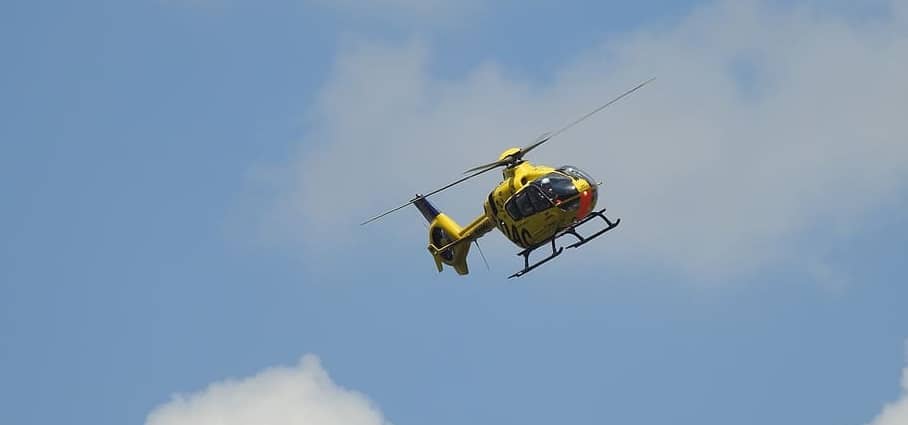
Recently a friend asked me why the police helicopter was constantly circling over his house in the middle of the night. He asked why they didn’t just fly back and forth or hover up high. As a chopper pilot, there are some good reasons why we circle.
Helicopters use less power to fly at 60 knots in a circle over a location compared to the power required to hover. This allows for a longer time on station and gives the occupants or pilot an entire 360° view of the scene to film, observe, or recon before making an approach to land.
Some of these may start to make a little sense so now let’s look at the details of why helicopters circle rather than do something else.
Why Do Helicopters Fly or Circle Over My House?
Police & news are the two most common helicopters that may be seen circling over your house. Something on the ground in your vicinity is of interest to the crew and the helicopter is using its camera to film or search the area. Circling allows the incident to stay in view of the crew at all times.
When the object in question is stationary, like a road traffic accident or a criminal trying to hide the best way to keep that area in view at all times is for the helicopter to circle or orbit around it.
Most police or news pilots will set up an orbit between 500ft-1000ft above the object and fly around 60 knots(kts) airspeed. This gives an altitude that is high enough to be able to clearly see the object by eye while keeping a safe height above the surrounding area. This height also helps to reduce the amount of noise people will hear in their homes, especially at night.
Because the helicopter has a camera mounted on its nose or side a good majority of the time the camera operator is the one wanting to view or track the object. To do that the pilot will fly the orbit so the camera operator is on the inside of the circle. This helps the camera operator keep the shot framed with minimal work because the pilot is able to easily keep the object in sight by using a mixture of looking outside and looking at the camera screen.
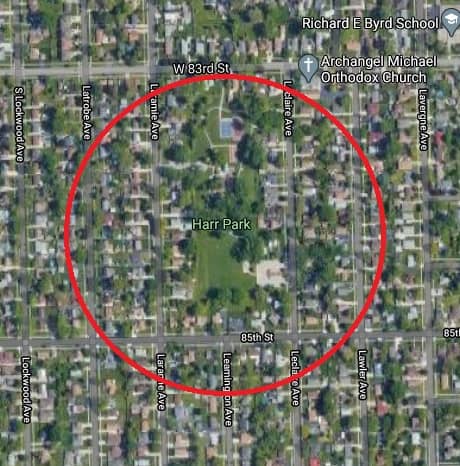
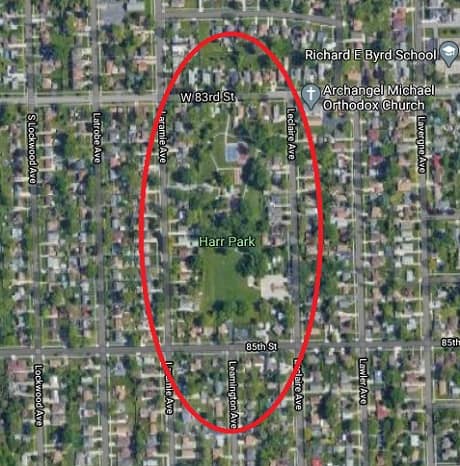
The shape of the orbit the pilot selects to fly depends on the object of attention. When the area is flat and fixed, then a circular orbit requires the least amount of work from the pilot to keep the object in the center of the orbit.
If the area is large or the object is moving, then an oval flight path may be a better alternative. This requires a little more work from the pilot as there are straight flight sections with possible tight turns at each end.
During tight turns, it can make viewing the object difficult because of the bank angle of the helicopter during the turn. As the helicopter banks over the camera operator will need to move the camera to ensure the object stays in shot.
Oval patterns require work from both the pilot and the camera operator to keep the object in shot. Flying circular orbits requires far less control of the camera.

Police helicopters are commonly seen orbiting over residential areas. If you would like more information regarding police helicopters I recommend this article:
Police Helicopters: All Your Questions Answered!
Why Does A Helicopter Circle Before Landing?
Circling in a helicopter is the best way to view an area from all sides to look at the landing spot. When a helicopter pilot is landing at an unprepared area like a baseball diamond, city park, or even a hole in the trees out in the remote parts of the country, they have to look and assess several factors:
- Wind – Landing into the wind is the preferred choice, but will the approach path in and out of the landing site be clear of objects to facilitate this?
- Wires – Are there wires across or near the landing spot. Pilots usually look for supporting structures like poles or towers as wires can be impossible to see at times
- Objects – Trees, towers, structures, people, debris. Are any of these in the way during approach, landing, or departure?
- Sun – Will the glare of the sun on the window obscure vision when approaching to land?
- Shape – What is the shape of the clear area to land, long and skinny or wide open? This can dictate the direction of approach to land
- Slope – Is the ground sloping where the pilot wants to land. Most helicopters have between a 5-10° slope landing limitation
- Landing Spot – Is the landing spot clear of obstructions, debris, people etc
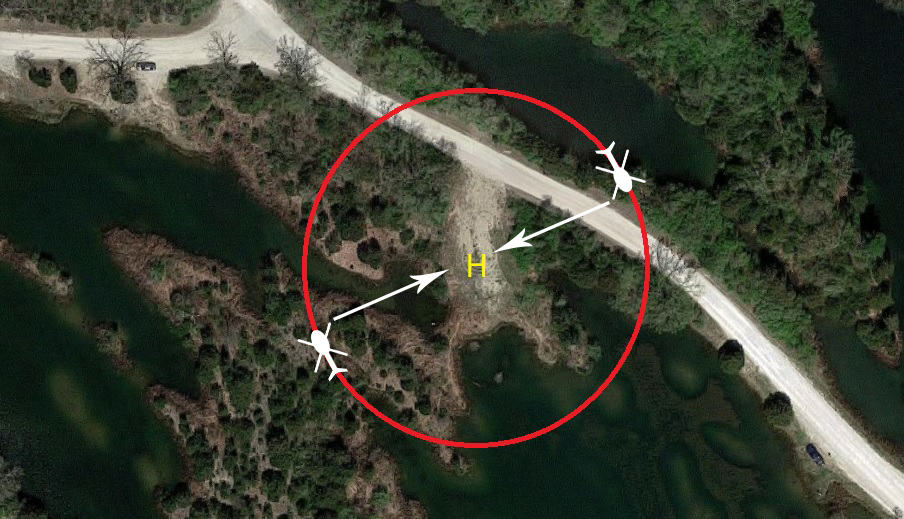
All of these factors need to be assessed before the pilot formulates the best plan to safely approach, land, and depart the spot. The easiest way the pilot can do this is by using 2 orbits:
- High Orbit – Usually 500ft above the spot to look for the main objects, asses wind, and look at the approach and departure paths
- Low Orbit – Usually 100ft – 200ft above the spot for final observations of the exact landing point
A good, experienced pilot can do all of this in 1-2 orbits while descending to start the approach. Most orbits will be done clockwise as most helicopter pilots sit on the right side of the helicopter. This will give the pilot the best view of the entire area.
Flying an orbit also helps to view possible hidden obstacles. Shadows and the sun can really hide objects from up high and depth perception can be very obscured. By taking the time to circle the landing spot, the pilot gets the best chance to find anything that could cause them problems once on final approach.

Join My Newsletter & Get Great Tips, Information and Experiences To Help You Become a Superb Pilot!
Circling Vs Hovering
The one thing that makes helicopters unique is that they can hover. They can hover several feet off the ground or, if sufficient power is available they can hover thousands of feet in the air – So why don’t pilots just hover to look at a spot or object?
Hovering
Hovering can be a great way to inspect something and the main ways that hovering is used instead of orbits are:
Tall Buildings – When trying to look down into the street that is surrounded by tall buildings a high hover is a better option. If a helicopter orbits, the surrounding buildings can block the view.
By maneuvering the helicopter into the best stationary position it allows the object to be observed easily.
Limited Airspace – When many news helicopters like to cover an incident the pilots can talk to one another and each hold their position. I saw this happen at Boeing Field near Seattle when 6 news helicopters all sat hovering to the sides of the runway when the new Boeing 787 Dreamliner flew in for the first time.
By doing this, Air Traffic Control allowed them to get closer and each news channel got a perfectly clear shot of the approach and landing of the plane.
Circling
Here are the most common factors why flying an orbit at around 60 kts airspeed is done in a helicopter:
Power Required – Hovering a helicopter requires the most amount of power from the engine/s, especially when they are about 20ft-60ft above the ground. Flying at 60kts it requires the least amount of power from the engines, thus reducing fuel consumption.
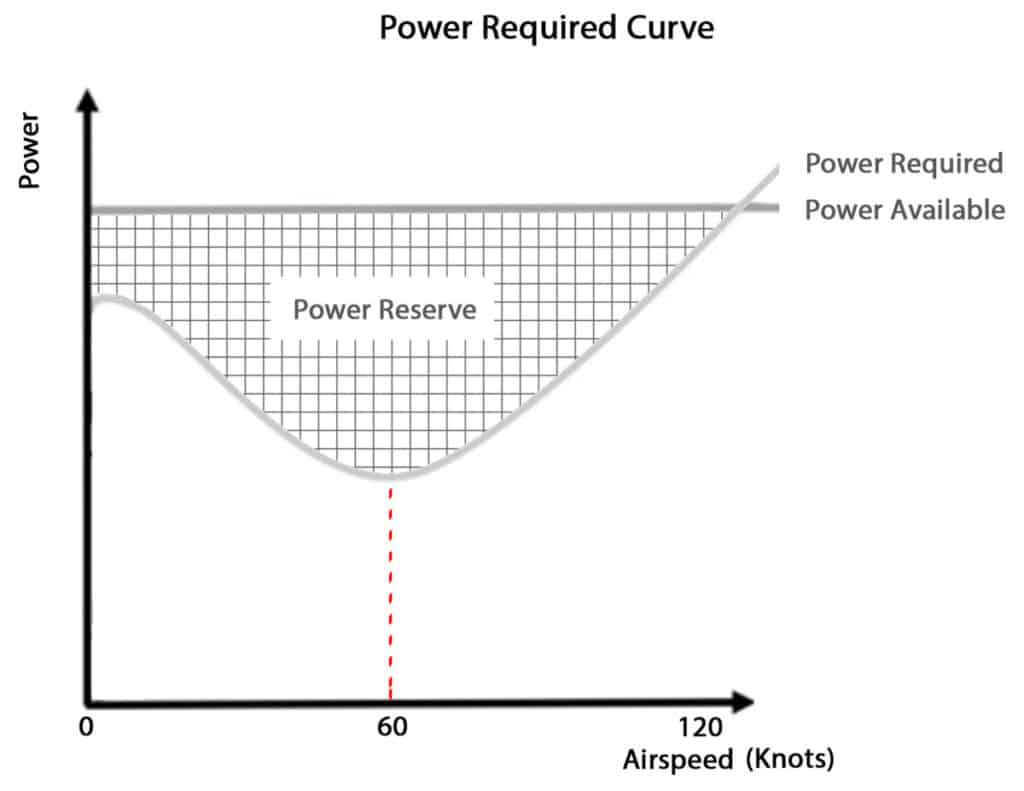
When the helicopter is at a slow speed the rotor system has to create all the lift just from the engine power. As the helicopter begins to accelerate the main rotor system begins to get a hand from aerodynamics and the power required to keep the helicopter flying reduces.
At 6o knots this is when the power required to fly is at its lowest. Once the helicopter goes past this speed, drag on the aircraft begins to require more power to overcome it and push the helicopter through the air.
Flying orbits at 60 knots allows the helicopter to use the least amount of power, which means the least amount of fuel burn, thus the pilot is able to remain on scene much longer than just sitting there in a hover.
H/V Diagram
The H/V or Height Velocity Diagram is a diagram issued by the helicopter manufacturer that tells the pilot when a helicopter could be landed safely if their engine were to stop. This diagram is based on height above the ground and airspeed.
Height and airspeed are the two best friends of a pilot in an engine failure situation and having both are great but what if you only have one…
If I have lost you, just hang in there and I will explain:
- If the aircraft is low and slow when the engine fails then the chances of the helicopter making a safe autorotation landing are slim.
- If the helicopter is low and fast and the engine quits the pilot may be unable to slow the helicopter down in time before it sinks and contacts the ground.
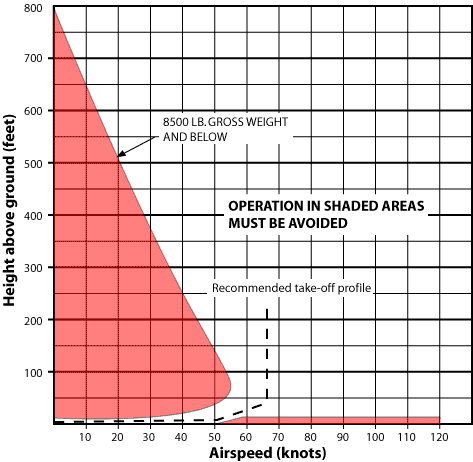
In the diagram above, to avoid these scenarios, the pilot will accelerate to around 50 knots while staying 5-10ft above the ground and then begin to climb away. By doing this the pilot avoids the red ‘Avoid’ areas.
So how does this apply to a circling helicopter? One of the questions my friend asked was why not just hover? In the diagram, to hover (0kts) the helicopter would need to be over 800 feet high to be able to make a safe autorotation landing, and that’s provided there is an open area pretty close by.
By circling around at 60 kts the pilot does not have to worry about the H/V Diagram and if the engine were to quit, the best autorotational speed for most helicopters is 60 kts, which they are already at. There may also be more chances of finding an open landing location as the forward speed they have allows them to cover more distance during the glide.
To Finish
The main reasons why helicopters circle overhead are to burn less fuel and stay on station longer, give the occupants the best view of the scene, and keep the helicopter in a safe flight condition if the engine were to ever quit.
It is also a lot easier to fly in a steady orbit at 60kts than try to maintain a high hover without visual references to let the pilot know if they are drifting or altering height.
Further Reading:
If you found this article interesting and would like to keep reading, I highly recommend the following articles from my blog:

